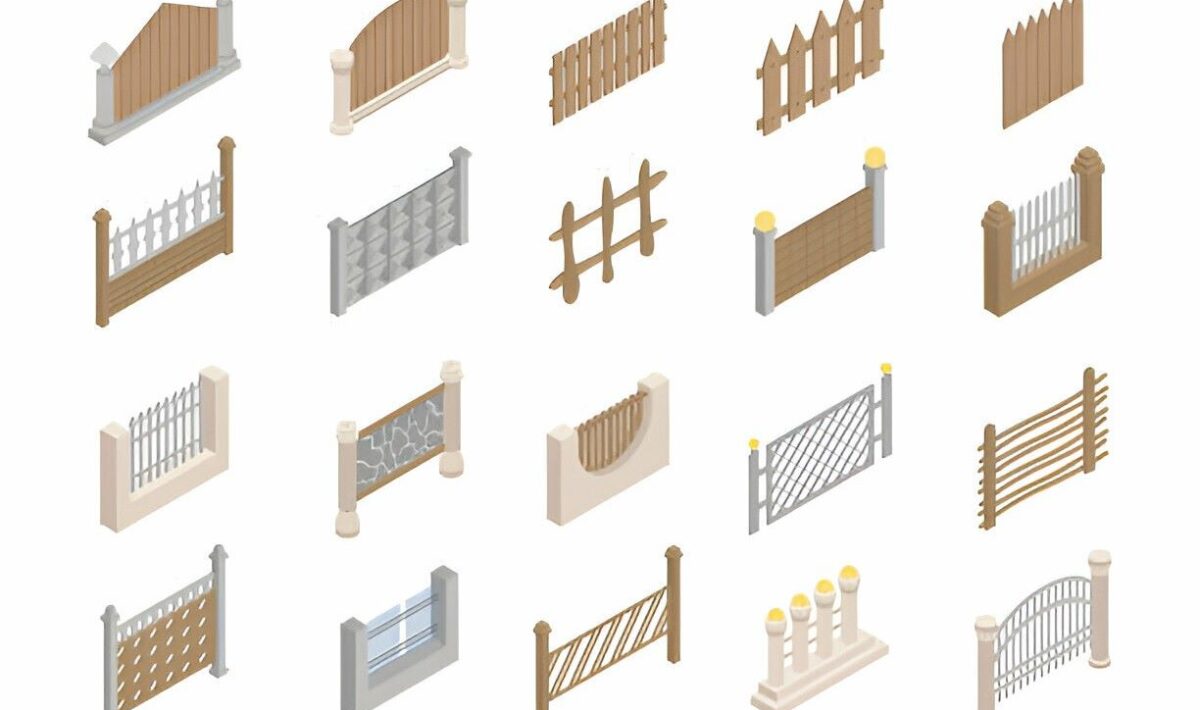Choosing the right material for your backyard fence is crucial for enhancing your property’s privacy, security, and aesthetic appeal. With numerous options available, it’s essential to consider factors such as durability, maintenance requirements, and climate suitability.
This guide explores six top materials for backyard fences, highlighting their unique benefits and potential drawbacks to help you make an informed decision.
Wood: Timeless Appeal and Versatility
Wood fencing remains a popular choice for its natural beauty and versatility. It offers a wide range of styles, from classic picket fences to modern horizontal designs, suiting various architectural aesthetics. Cedar and redwood are particularly favored for their natural resistance to decay and insects.
However, wood fences require regular maintenance to preserve their appearance and structural integrity. This includes periodic staining or painting to protect against weathering and potential rot.
Despite the maintenance needs, many homeowners appreciate wood’s warmth and the ability to customize its look over time.
Vinyl: Low Maintenance and Durability
Vinyl fencing has gained popularity for its low maintenance requirements and long-lasting nature. It resists fading, rotting, and insect damage, making it an excellent choice for various climates. Vinyl fences come in a range of styles and colors, allowing homeowners to find options that complement their property’s aesthetic.
While the initial cost of vinyl fencing may be higher than some alternatives, its durability and minimal upkeep can make it cost-effective in the long run. However, vinyl may not be suitable for areas with extreme temperature fluctuations, as it can become brittle in very cold weather or warp in intense heat.
Aluminum: Lightweight and Rust-Resistant
Aluminum fencing offers a sleek, modern look while providing excellent durability and low maintenance. It’s particularly well-suited for coastal areas or regions with high humidity due to its rust-resistant properties. Aluminum fences are also lightweight, making installation easier compared to heavier materials.
One drawback of aluminum fencing is that it may not provide as much privacy as solid panel options. However, its strength and longevity make it a popular choice for those seeking a balance between aesthetics and functionality. Aluminum fences can also be powder-coated in various colors to match different design preferences.
Composite: Eco-Friendly and Low Maintenance
Composite fencing, a mix of wood fibers and recycled plastic, mimics wood’s look with minimal maintenance. This material resists rot, insects, and weathering, making it an excellent choice for various climates. Composite fences come in a range of colors and textures, allowing for customization to suit different tastes.
While composite fencing typically has a higher upfront cost than wood, its longevity and low maintenance needs can offset this initial investment over time. Some homeowners may find that composite materials lack the authentic feel of natural wood, but many appreciate the balance of aesthetics and practicality it offers.
Chain-Link: Affordable and Functional
Chain-link fencing remains a popular choice for its affordability and functionality, particularly for large properties or areas requiring visibility. Modern chain-link fences can be coated with vinyl in various colors, improving their aesthetic appeal and durability. This type of fencing is also easy to install and requires minimal maintenance.
While chain-link may not offer the privacy of solid panel fences, it can be combined with slats or climbing plants to increase seclusion. Its durability and cost-effectiveness make it a practical choice for many homeowners, especially those prioritizing security over aesthetics.
Wrought Iron: Elegant and Secure
Wrought iron fencing offers unparalleled elegance and security for backyard enclosures. Its sturdy construction provides excellent durability and can last for decades with proper care. Wrought iron fences can be customized with various decorative elements, adding a touch of sophistication to any property.
However, wrought iron requires regular maintenance to prevent rust, especially in humid or coastal environments. It’s also one of the more expensive fencing options, both in terms of materials and installation.
Despite these considerations, many homeowners choose wrought iron for its timeless appeal and robust security features.
Conclusion
Choosing the right backyard fence material means balancing durability, maintenance, aesthetics, and budget. Whether you want wood’s charm, vinyl’s low maintenance, aluminum’s modern look, composite’s eco-friendliness, chain-link’s affordability, or wrought iron’s elegance, there’s a fencing material for you.
Consider your local climate, property style, and long-term maintenance preferences to make the best choice for your backyard fence.

